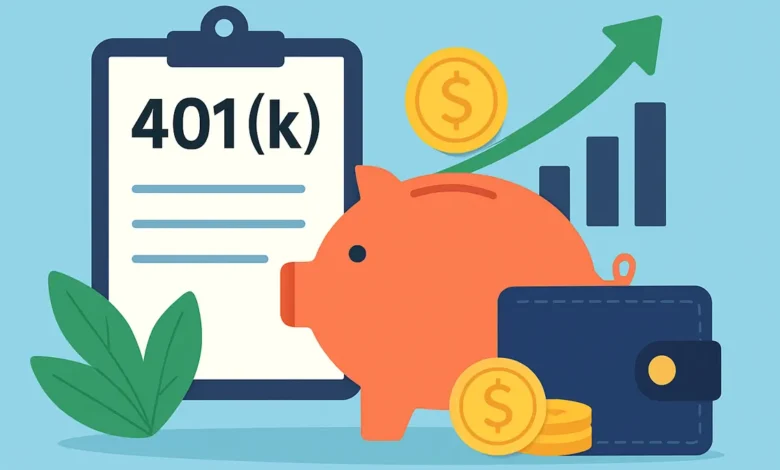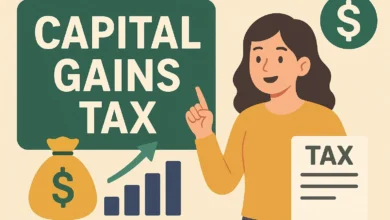10 Smart Tips to Maximize Your 401(k) Contributions

Table of Contents
Imagine waking up every morning with no financial worries. This vision can be your reality with smart 401(k) planning strategies.
Whether you are early in your career or nearing retirement, it’s important to maximize your 401(k) contributions. Follow these 11 pro tips to make the most of your retirement savings:
1. Increase Your Savings
The first step in maximizing your 401(k) contributions is to set long-term goals for retirement. Work with a financial planner to develop a comprehensive retirement budget that balances short-, medium-, and long-term goals to maximize the effectiveness of your savings.
401(k) plans are an excellent vehicle for retirement savings, because they provide tax benefits that encourage employee participation. Employees who contribute to their company’s 401(k) plan can reduce their federal taxable income by up to 12% of their wages, depending on their employer’s match policy.
Many 401(k) plans offer automatic enrollment and escalation features that can automatically increase the amount employees save each pay period, often in line with their raises or annually. This convenience can make saving for retirement feel easy and effortless, which helps keep participants on track. Additionally, investing in low-cost funds can help minimize the impact of fees, which can erode an investment’s return over time. This can be particularly important as people near retirement. Investing early can also take advantage of the power of compound interest, which grows an investment’s returns by reinvesting any gains or interest on past investments.
2. Take Advantage of Employer Matching
Many employers offer to match some of the money that employees contribute to their retirement plans. This is free money and should be taken advantage of whenever possible.
Typically, the employee must contribute at least 6% of their salary to receive the full employer matching contribution. Employees should consider increasing their contributions to take advantage of this benefit during open enrollment or when they get a raise, bonus or other compensation.
Fidelity recommends aiming for 15% of your pretax income, including any employer match. If you can’t reach that number yet, try to increase your contribution rate by 1% each year or when you get a raise or bonus. This can yield tens of thousands in additional retirement savings over time. Employees should also familiarize themselves with their company’s matching formula and vesting schedule. A vesting schedule dictates the amount of ownership an employee has in employer contributions based on the length of their employment. This can help ensure that they won’t forfeit any of the employer matching contributions if they leave their job, either voluntarily or involuntarily.
3. Save on Taxes
Employees save tax-free when they contribute to a 401(k) plan because the money is deducted from their paycheck before it gets processed. Employers also get a tax break, as they don’t have to pay income taxes on contributions, although they must still withhold Social Security and Medicare taxes from the money employees withdraw in retirement.
A financial planner can review an employee’s current and predicted tax situation to determine how much to contribute. Ideally, workers should aim to save as close to the annual limit as possible (as of 2024 it’s $23,000 or $30,500 for those over 50).
To maximize your savings, work with a Certified Financial Planner to create a comprehensive financial plan that’s based on your unique goals. Then, consider how best to invest your 401(k) funds. For instance, diversifying appropriately and rebalancing regularly can help you capture adequate long-term returns without overexposing your balance to risk during up and down markets. And minimizing fees, including internal mutual fund and exchange-traded fund expenses, is critical. Even 0.5% in fees can have a significant negative impact on your investment returns over decades.
4. Plan for Long-Term Retirement Growth
The earlier you start saving and investing in your retirement plan, the more you can potentially grow your nest egg thanks to the power of compounding. This is when any earnings from your original investment are reinvested to generate even more earnings – and over time can make a significant difference in your final savings balance in retirement.
Be sure to check out your employer’s matching policy and aim to contribute enough to receive the full benefit of your company’s contribution. That is essentially free money that you should not leave on the table.
Consider switching to a Roth 401(k) account to save with after-tax dollars. This is a great option for employees expecting to be in a higher tax bracket in retirement or those looking to reduce their taxable income.
Choose investments wisely, diversifying your portfolio across several asset types and rebalancing when necessary. Also be mindful of your risk tolerance and age, as you may want to shift to a more conservative allocation as you approach retirement. A financial advisor can help you determine the appropriate risk level for your individual needs and goals.
5. Work with a Financial Advisor
Whether you’re saving for retirement, a new home, or college for the kids, a financial advisor can help set long-term goals that will get you there. They’ll also create a plan to help you stay on track, including regular check-ins and progress reports.
They can also help you reduce investment fees by negotiating discounts, watching costs and rebalancing your portfolio. And they can provide tactical strategies like tax loss harvesting and strategic asset location, which can add up to thousands in savings annually.
It’s important to choose an advisor who will put your best interests first and be a good fit for you. Be sure to look for a fiduciary who is legally required to act in your best interest and disclose any conflicts of interest. Finally, they should treat you well and respond to your requests promptly. You can find a fiduciary financial advisor by using the CFP Board or FINRA’s BrokerCheck. Then, they’ll be able to make a real difference in your long-term retirement success.



